In mid-December 2015 Teo Lee Wei and K presented me with a fat Oleander Hawkmoth (Daphnis nerii) caterpillar that was chomping on their Periwinkle (Catharanthus roseus) plants in their garden (above). Under my care it continued feeding on the leaves as well as flowers (below).
The yellow-green caterpillar was at its last stage instar and soon turned dark grey (below).
It stopped feeding and moved to the soil to pupate. Initially it tunneled into the soil but moved to the surface to form its cocoon of discarded leaves (below).
The pupa was initially whitish but turned dark rapidly (below).
Eclosure occurred 22 days later in the early hours of the morning. By the time it came to my attention, it was ready to fly off – see video below of the hawkmoth fluttering.
Eclosed Oleander Hawkmoth fluttering…
It flew off but remained nearby. It was placed in a cage (below: dorsal and ventral view).
YC Wee, Teo Lee Wei & K
Singapore
January 2016


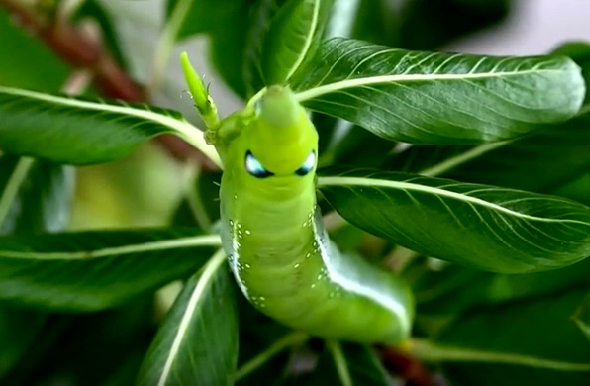
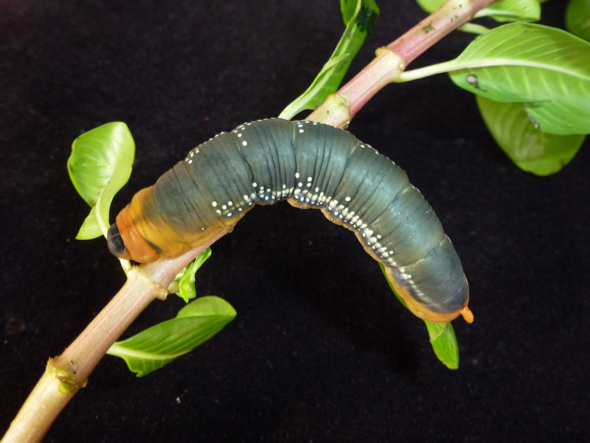

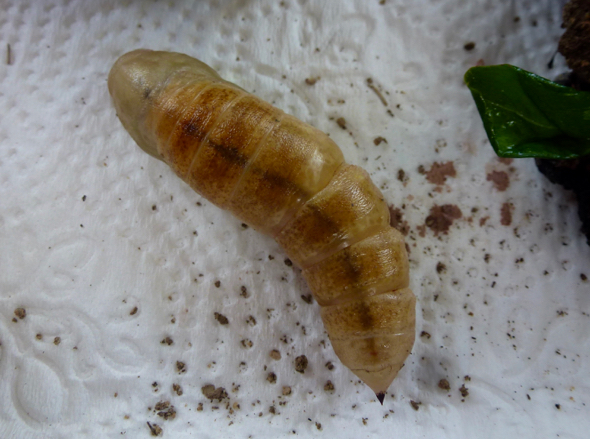
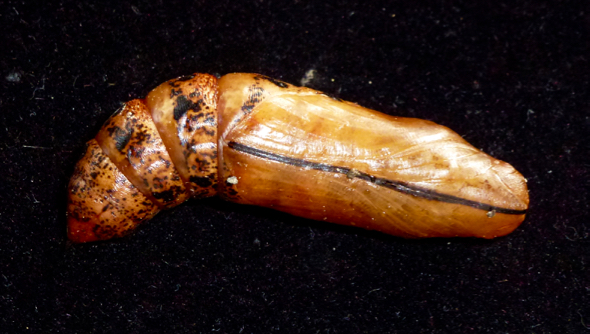
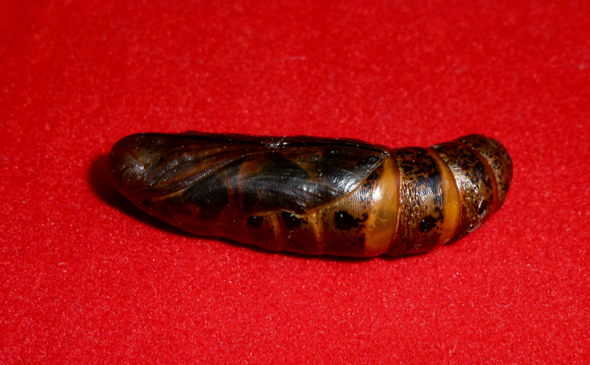

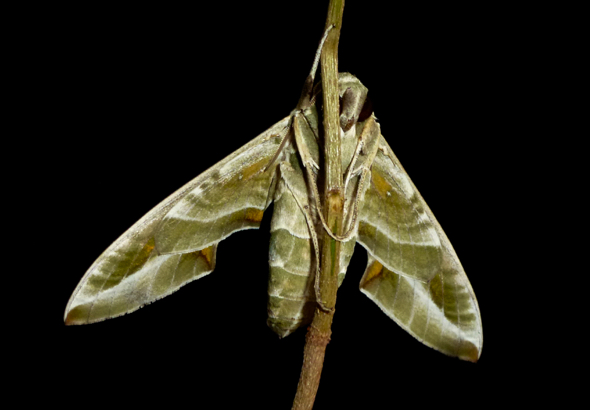







13 Responses
Wow! Fantastic documentation.
Hey, guys i had a concern, my Oleander Hawk moth does not move all day, and sits in one place either on its stick, or on my shirt. It does not move and does not drink out of its cap itself so i use a pin to make its probos. land inside the cup and it drinks that way. I just want to know if this is normal and what is happening…
This does not appear to be a nromal behavior. Please keep on observing (without interference) and see what happens next. Interesting.
My pet Oleander Hawkmoth Caterpillar didn’t turn into a brown one but it’s already becoming a pupa. Is it normal?
Not that I know.
We found some exactly the same caterpillars in our garden that are already in black & brown stage (I guess ready to turn into a pupa). We have put then in a bowl with some leaves. Should we put some soil too. I too would like to study the different stages and the final product.
I may pupate using the leaves to cover up… Some soil will help.
Every caterpillar on my vinca plant eventually falls off the plant while still green and dies. What is going on?
Can it be attacked by insects/fungi/etc? You need to make detailed observations to find out what happened.
How long does the oleander Hawk moth live?
Dear Lee Lee,
Quak Wan Ling has a very detailed documentation of the oleander hawkmoth life-cycle.
http://www.bigbunnytrails.com/2015/03/life-cycle-of-oleander-hawkmoth-daphnis.html